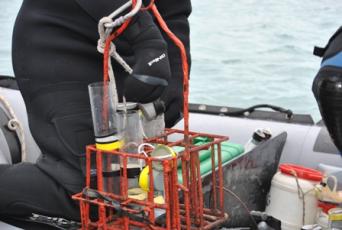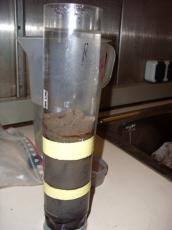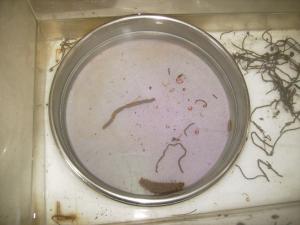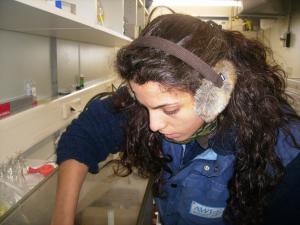Meiofauna investigations in Potter Cove: And the show has started!
Finally after the troubleshooting of a few (quiet normal and easily expected in the “in field life”) technical problems, the sampling for the starting of my experiments has happened.
On the February 4 and 5, I got as present a couple of sediment cores from the site in the cove that I am studying with respect to the bottom community.
 Sediment sampling |
 Sediment core |
I study meiofauna, small little tiny animals of very peculiar and sometimes weird shapes, which inhabit the surface and the deeper layers of the sediments in very high numbers. Together with sedimentary bacteria and some bigger animals the meiofauna metabolize the organic matter contained in these sediments. Among these animals we can find some “famous” groups like the polychaetes (worms), copepods, amphipods and isopods (all of these are crustaceans) and the numerous nematodes (little worms). The aim of my experiments is to investigate possible food preferences of these groups in a climate change perspective. I will feed them with different species of local microalgae, which I have previously sampled (year 2010) cultured (in collaboration with the department of Phycology of Ghent University) and labeled (13C labeling) and I will then “read” the animals tissue to see whether they ate, how much they ate and what was their preferred dish when pushed to make a choice in between different kinds of algae. The two algae species I have cultured and that I now am offering to the meifaune are: a big phytoplanktonic diatom, an algae with a silicate shell, and a small flagellate. My argentinean colleague Marcelo Hernando supposes that these 2 algal species may undergo a shift in their relative proportions due to local effects of the global warming. So the big question is whether a shift in these algal communities will also disturb the sedimentary food webs?
 sedimentary fauna from the core |
 Francesca at work |
Moreover, I am sampling bottom waters in 3 main stations in the cove to have an idea of the quantitative and qualitative composition of the settling particulate organic matter that may be available to the animals inhabiting those shallow water (15m) zones of the cove. Yesterday I obtained my first water samples, and I have been working for 15 hours in a row, filtering and filtering and filtering seawater! Well, that’s how we like it over here! In the future I am planning to sample again these stations not only for water samples but also for other stable isotopes studies I want to carry out on the primary producers community (microphytobenthos, phytoplankton, macroalgae) and grazers (zooplankton, meiofauna and macro-mega fauna). Well… See you later for updates…

